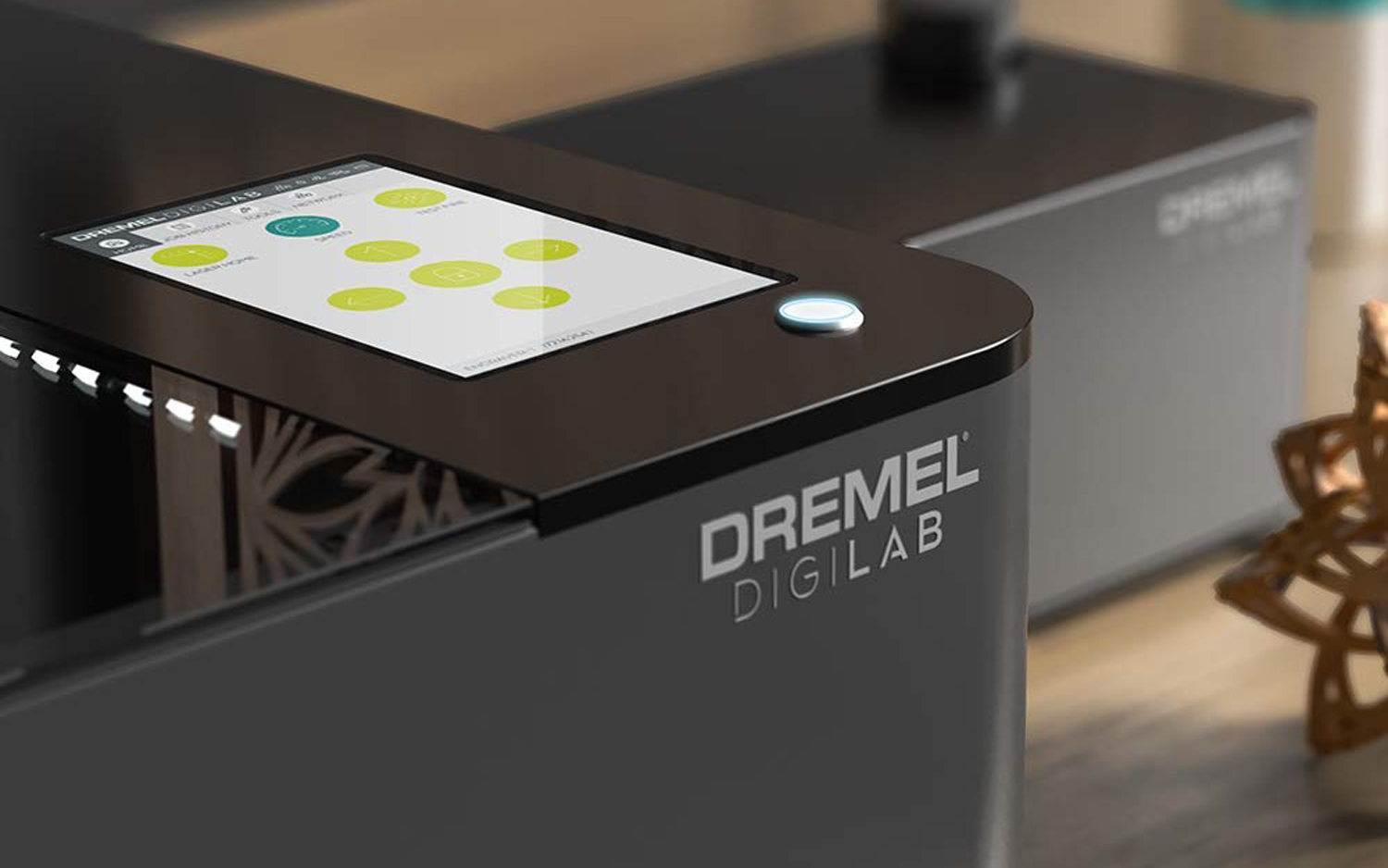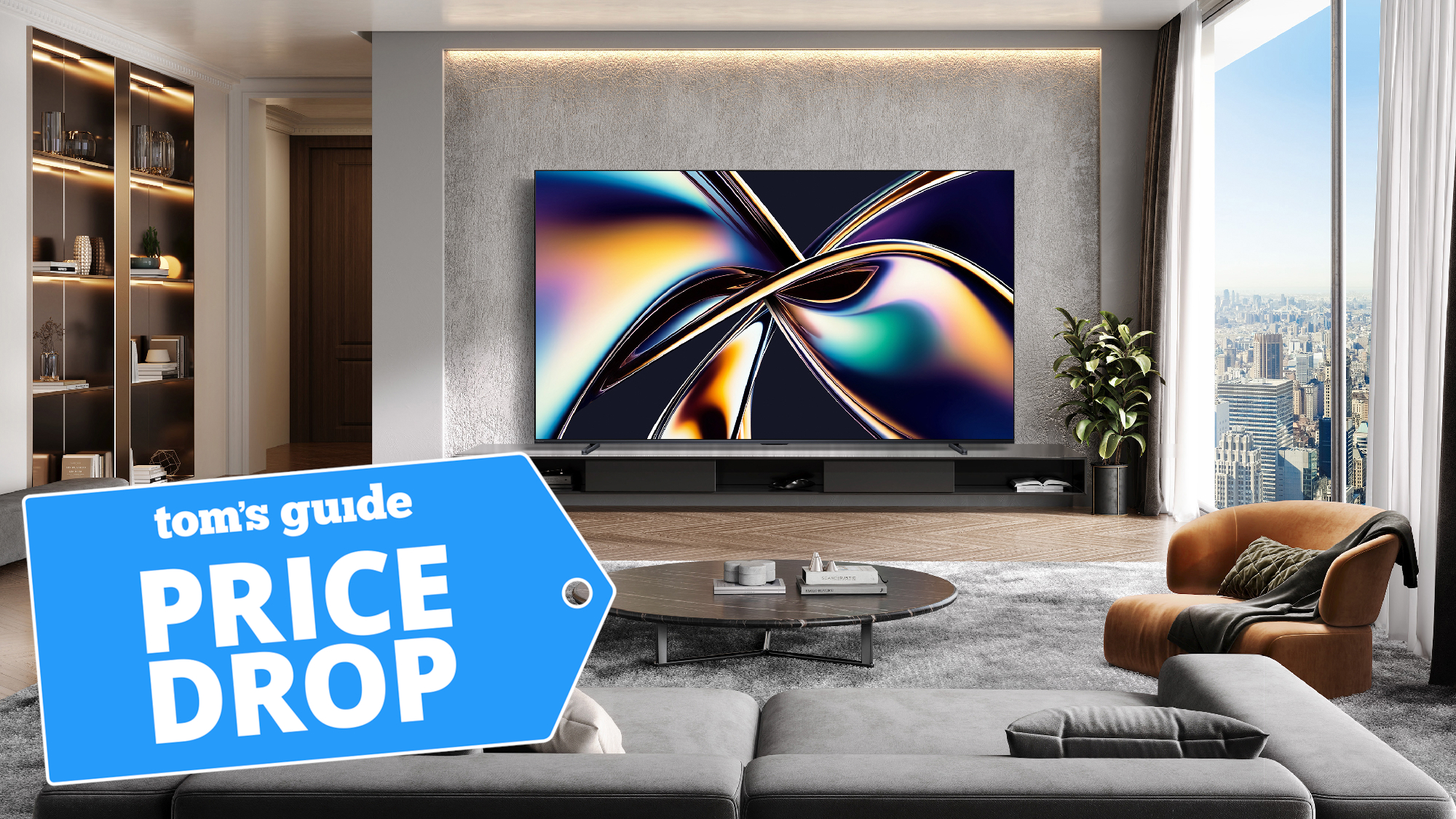Tom's Guide Verdict
The Dremel LC40 offers a lot of useful and intriguing features, but at a premium price.
Pros
- +
Cuts and engraves wood, leather and aluminium
- +
Easy to use
- +
Produces high-quality prints
Cons
- -
Expensive
- -
A little noisy in use
- -
Entry-level model lacks dedicated ventilation
Why you can trust Tom's Guide
It's not a shark with a laser attached to its head, but the Dremel LC40 can certainly do a lot. It's a laser cutter that uses a 40-watt infrared laser to cut, engrave and mark materials ranging from paper to aluminum, via plastic and wood.
While a 3D printer extrudes plastic to create prints, the Dremel LC40 produces its creations by slicing through card, leather or other soft materials; engraving designs into plastics; or cutting through wood up to a quarter of an inch thick and acrylic material up to 6mm thick. It is pretty easy to use, as well. You can scan material with the built-in camera and upload your design via the web interface, and the cutter will engrave the design or cut it out.
But this flexibility doesn't come cheap. At $5999, Dremel's laser cutter is more expensive than similar devices like the Glowforge Plus, and we did find a few quirks.
Design: Large and bulky
The LC40 is a large device, measuring a little less than 3 feet wide and 2 feet deep. The LC40's top is mostly a glass cover that lifts to reveal the cutting area and an iPhone-sized touch screen. There is a single button below the touch screen that confirms operations such as starting the laser cutter running.
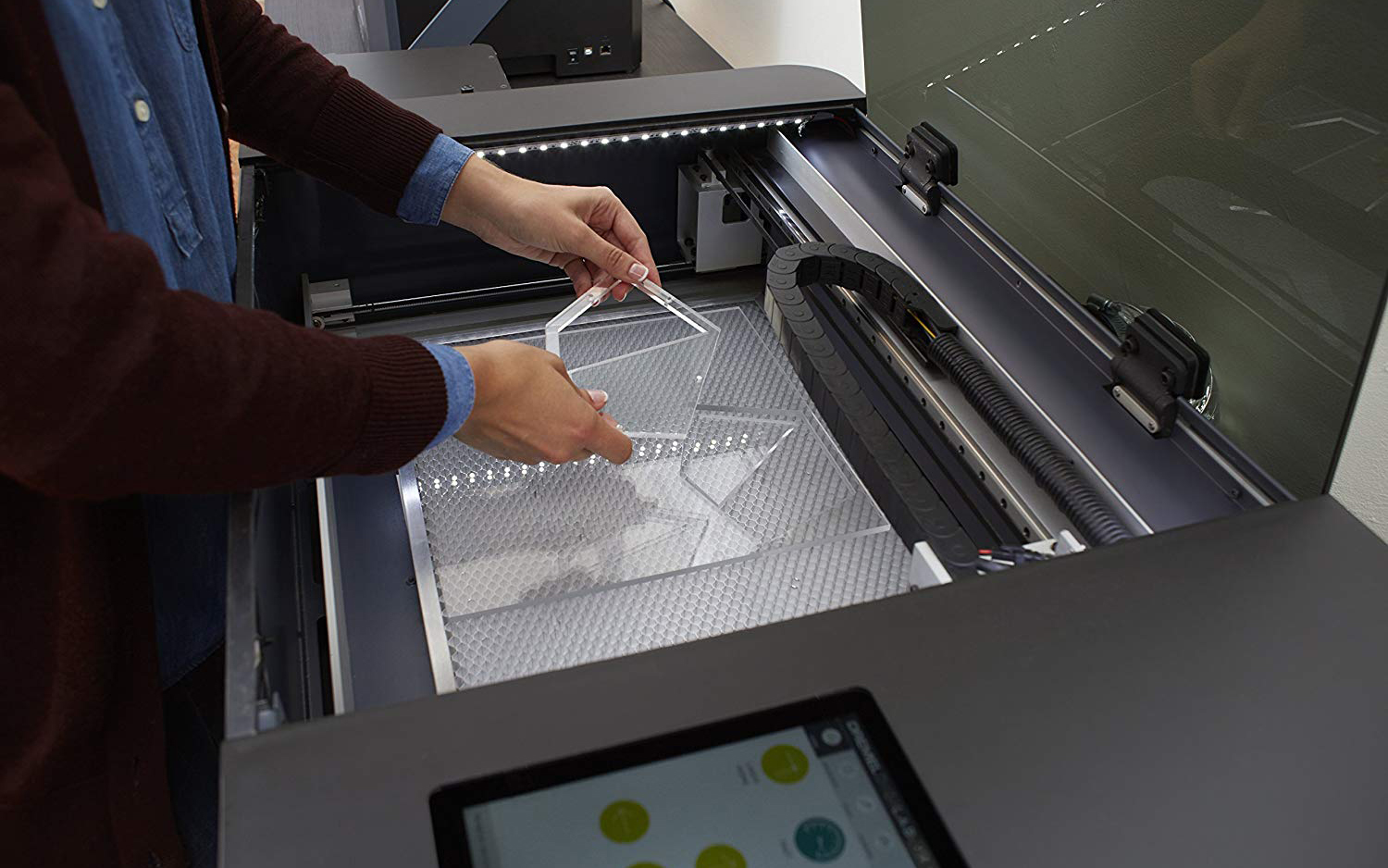
Under the glass cover is the cutting area, which can hold material up to a little more than 20 by 12 inches in size and up to about a quarter of an inch thick. The laser itself is concealed at the back of the case, and the beam is reflected by mirrors onto the cutting head, then downward onto the material. The cutting head is on rails that move it both left and right as well as forward and back. A small camera mounted next to the cutting head captures preview images that you use to place the cutting shape in the software or to scan objects in the cutting area.
The LC40 is a large device, so you'll need a lot of space to set it up and use it.
Laser cutting is a rather stinky process — even more so than standard 3D printing — and some materials can produce rather nasty chemicals when you zap them with a powerful laser. Cut acrylic, for instance, and you get a nasty smell like burnt plastic.
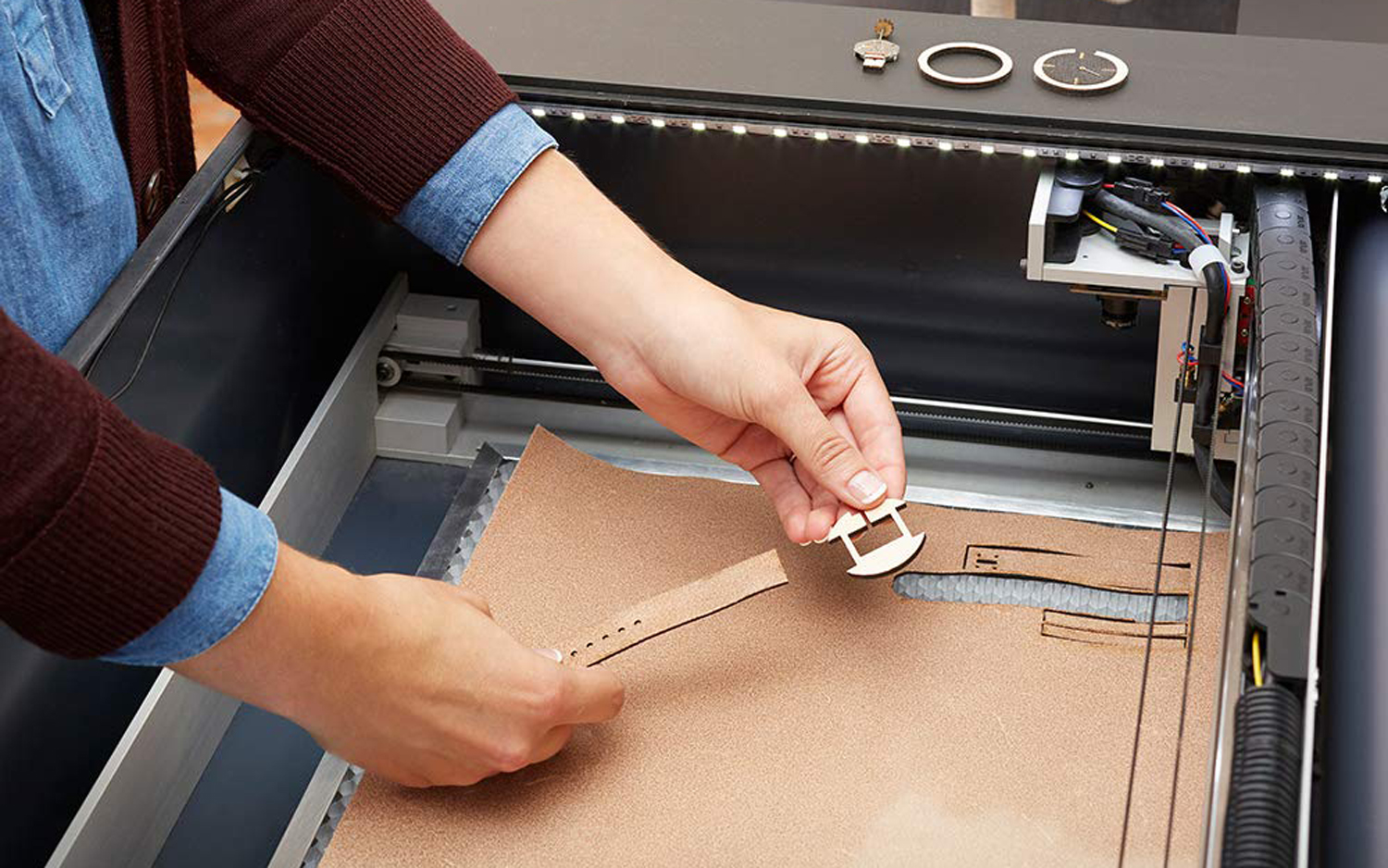
The least expensive model of the LC40 ($5,999) does not include any way to get rid of this smell, but the $6,299 model comes with a clip-on fan and a clothes-dryer-vent tube that hooks onto the back of the cutter case. Connect this to an air outlet, and it will vent the nastiness outside. The more expensive model of the LC40 ($7,999) comes with a fume extractor, so the cutter can be used without an air vent. Either way, some of the smell does escape into the surrounding area, so you should use this cutter in a well-ventilated space.
In addition, the LC40 needs cooling to get rid of the heat that the laser generates. This is handled by the water cooler, an included separate box that connects to the cutter by two pipes. You fill the box with water, and it pumps the fluid around the laser tube and base, then back through a radiator.
Setup: Several steps, but not complicated
The LC40 is a large device, so you'll need a lot of space in which to set it up and use the laser cutter, water cooler and fan vent. The water cooler isn't large (about the size of a shoebox), but it has to be connected to the back of the cutter by three tubes and a cable (two for water and one to measure the water level, plus power). In addition, you have to connect the fan and vent tube to a window or dryer vent.
MORE: Best Home 3D Printers - Reviews for Beginners and Enthusiasts
Once you have wired the cutter up, it's time to start it up and calibrate. The device takes you through the setup process with a step-by-step wizard, introducing the controls and testing the various parts. The only time you have to do much is when you set the laser height, which you do by putting an included plastic puck on the material, lowering the head to touch the puck and then tightening the holding screw.
The laser cutter will also require regular cleaning, as smoke and dust tend to accumulate on the mirrors and lens that direct the laser itself. Fortunately, an included manual describes this process well.
Control: Handled via the web
Dremel took an interesting approach for the control of the LC40: The software that sets up and controls the laser cutter is only on the device itself. As a result, you control the LC40 through either its touch screen or the web interface. You use the screen to set up the cutter and print files from USB drives or from memory. It's pretty simple to use and worked without problems in our tests. You use the button below the touch screen to confirm actions; to start a cut, for instance, you press the button twice.
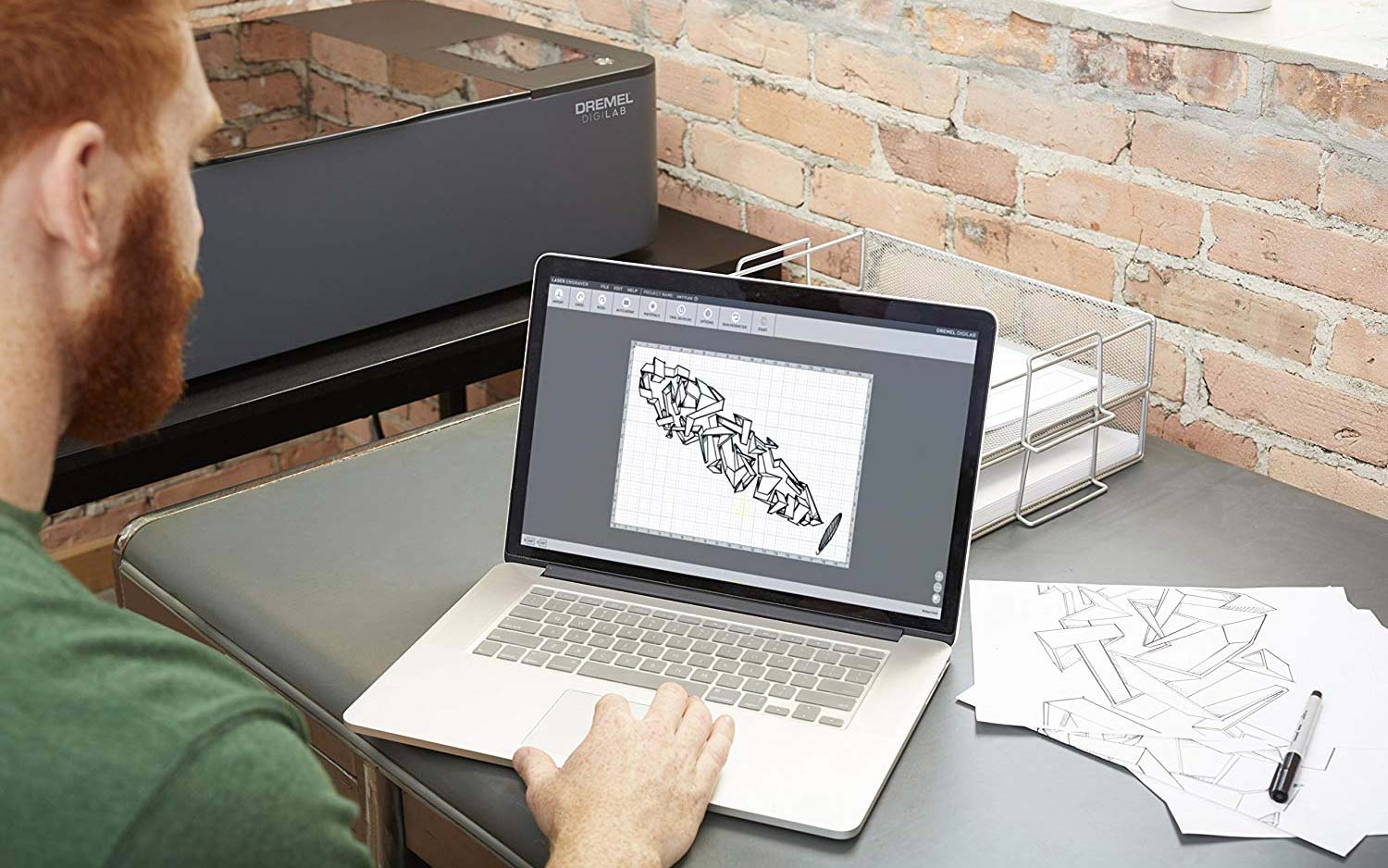
The web interface is the main way to control the LC40. This works on anything with a web browser; we were able to control the cutter from an iPhone and a laptop without problems. This is how you'd handle the entire process of setting up and controlling a print, from loading the file to moving the laser to make the cut.
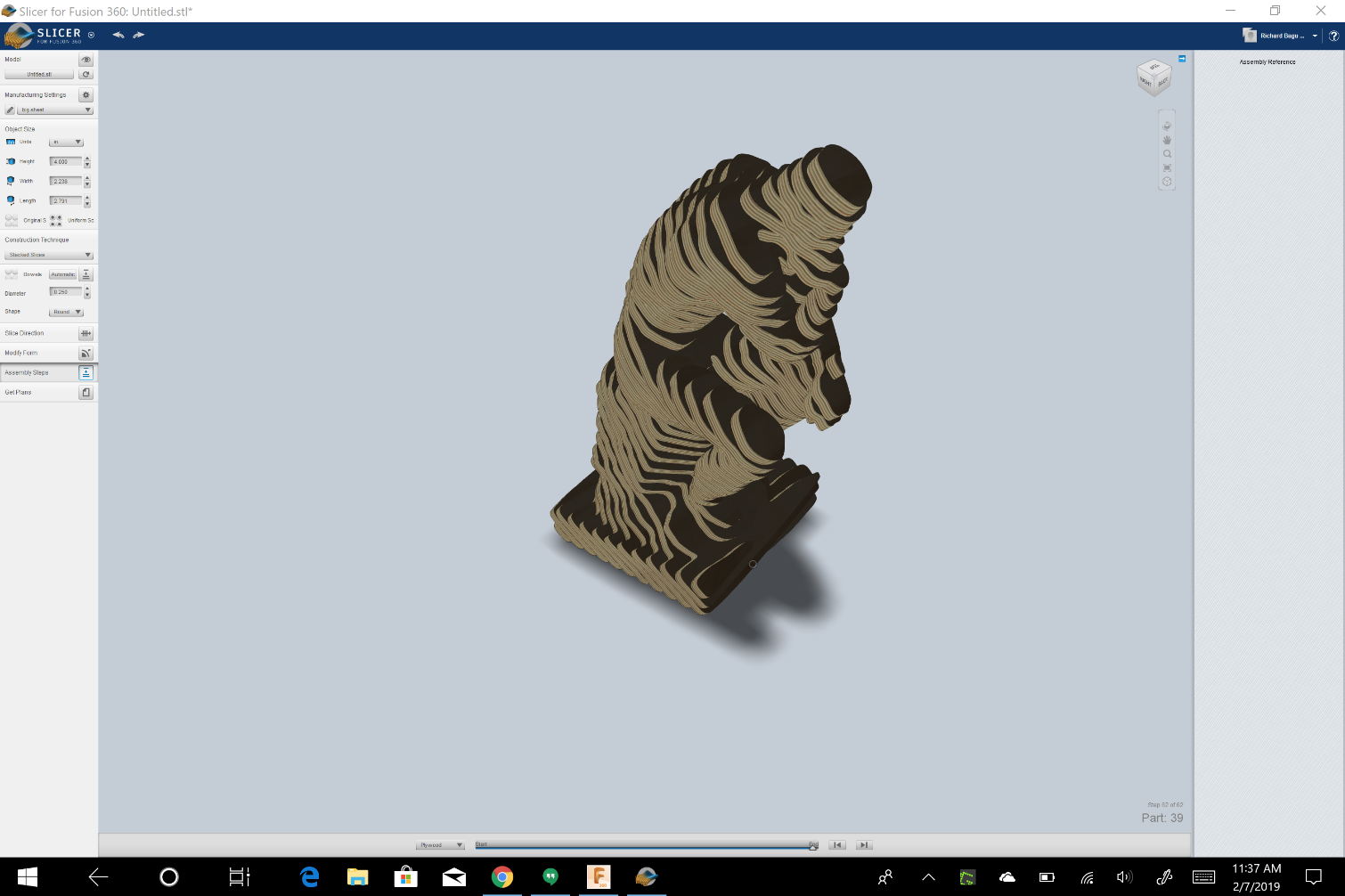
One curious omission here: There is no support for the DXF file format that other laser cutters (and software) use. Instead, the LC40 uses PDFs, though there are plenty of tools to convert DXF files to PDFs.
The LC40's software comes with a large number of presets for different materials, including acrylics, various types of wood, leather and even aluminum.
The laser cutter can also scan an image to cut or engrave. To do this, you put the original image on a piece of paper into the laser cutter, which uses the built-in webcam to to take shots that are stitched together and converted into a format for laser cutting. Using the same preview process, you can see what the image will look like before you cut it — useful if you want to engrave something onto an odd-shaped piece of wood and make sure your engraving will fit.
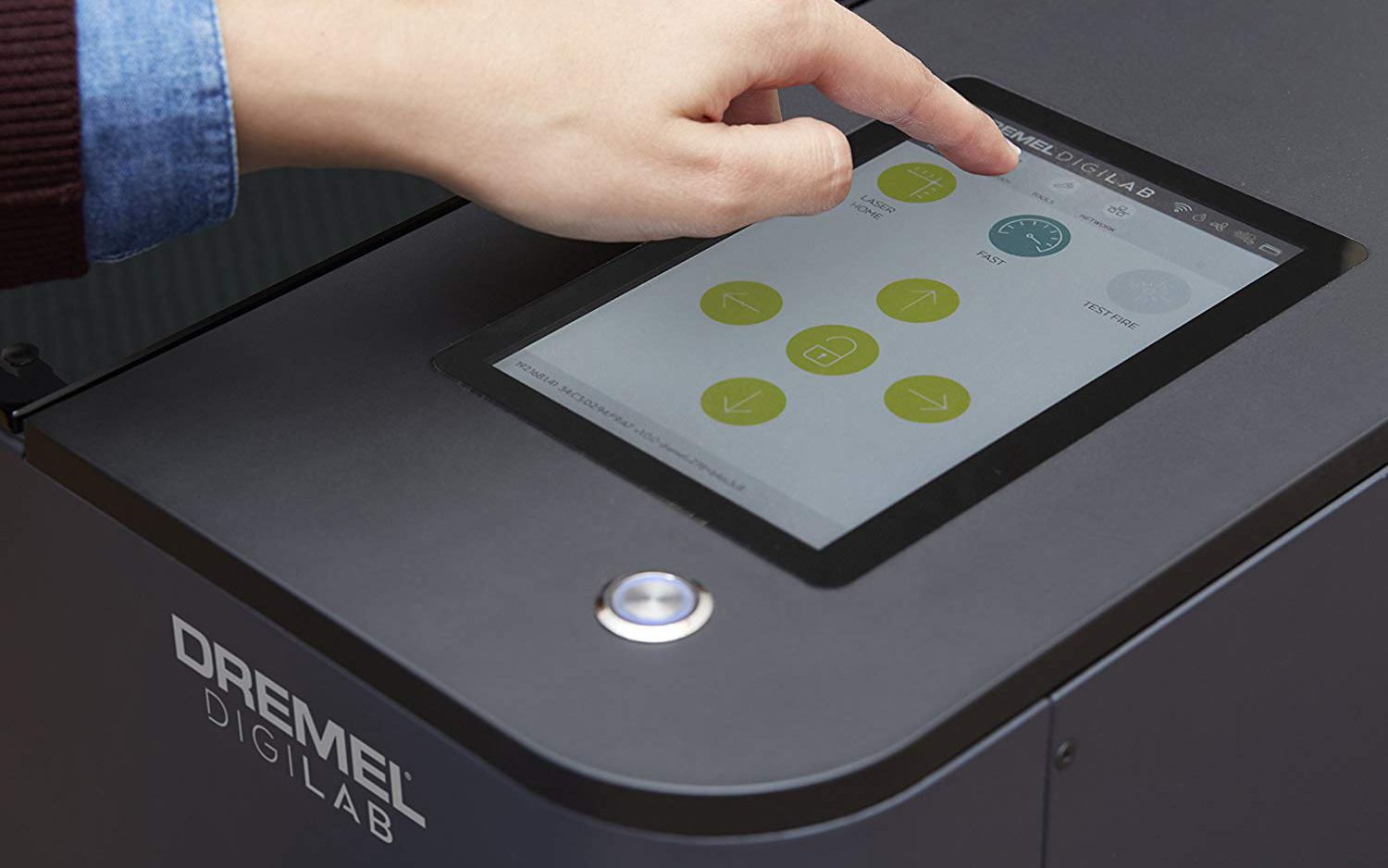
There are two main variables to understand with laser cutting: power and speed. Power is how much of the laser's output is used, usually indicated as a percentage. Speed is how fast the cutting head moves as it is working. If you have high power and slow speed, the laser will cut deeply into a material or go right through it. If you're using materials that are more likely to burst into flame or if you want to just etch onto the surface, you would use lower power.
Fortunately, you don't have to work this stuff out yourself. The LC40's software comes with a large number of presets for different materials, including acrylics (such as Perspex or Lexan), various types of wood, leather and even aluminum. Once your image and material is loaded into the cutter, you can just hit the button, and it will use the appropriate settings for laser power and speed. You'll still need to experiment, but these presets provide a good starting point.
Even with the fan engaged and the LC40 connected to an outside air vent, we found that the smell of cutting still escaped, causing a slight smoky aroma from wood and an unpleasant burnt-plastic odor from acrylic.
Printing Process: Smoky, but free of hassles
The process of cutting the material is also pretty straightforward: Once everything is loaded, you close the cover and hit the button twice, and the cutting starts. Because the cutting laser is infrared, you don't see much, just an occasional puff of smoke as the material is cut.
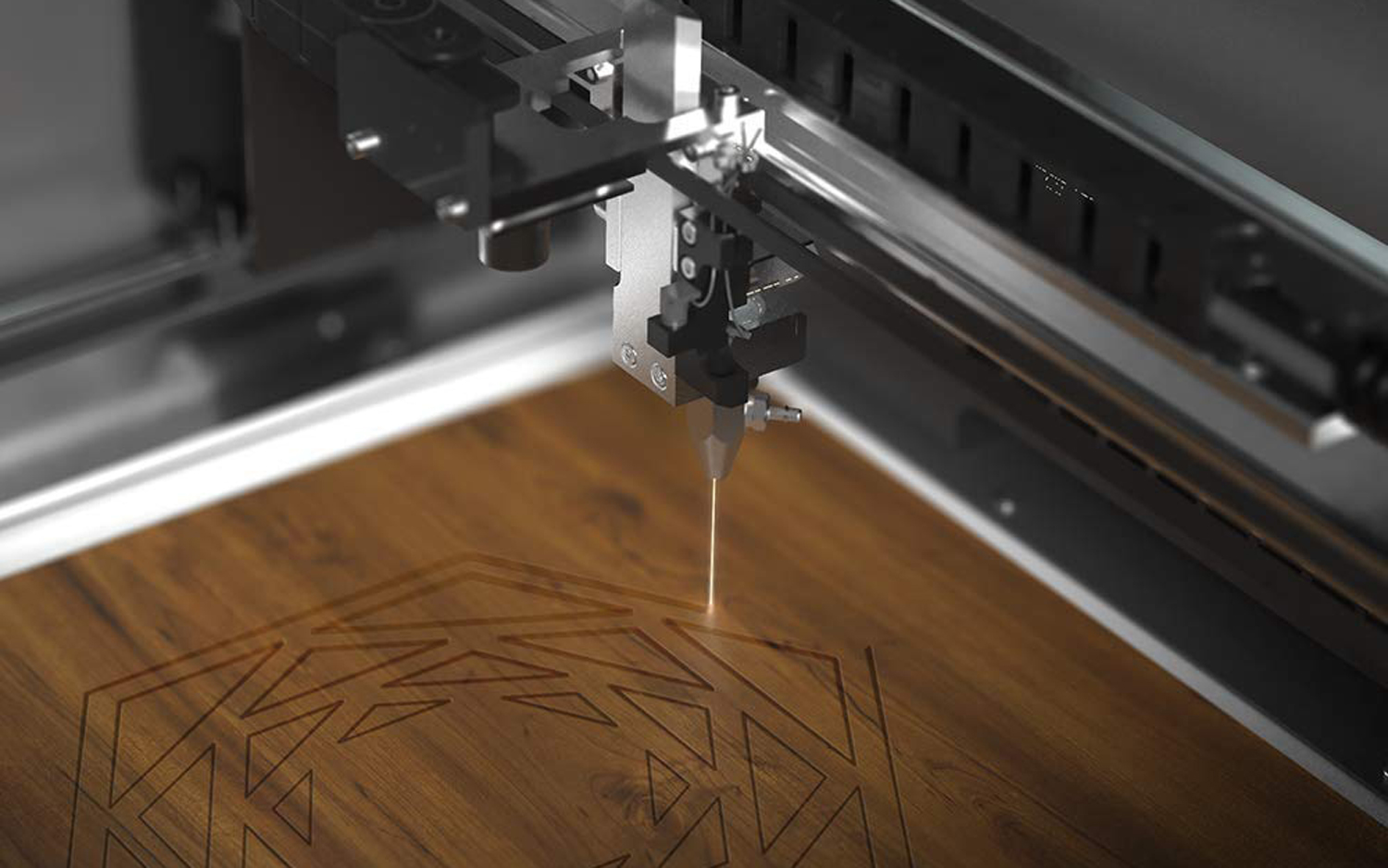
While the laser may be invisible, you still don't mess with it. The LC40 includes a sensor that enables the laser only when the lid is closed. Lift the lid, and the cutter stops immediately. We found that on our review unit, this sensor was a bit over-sensitive: It worked only when we pressed the lid down. I eventually resorted to using a bit of gaffer tape to hold it completely closed and prevent interruptions.
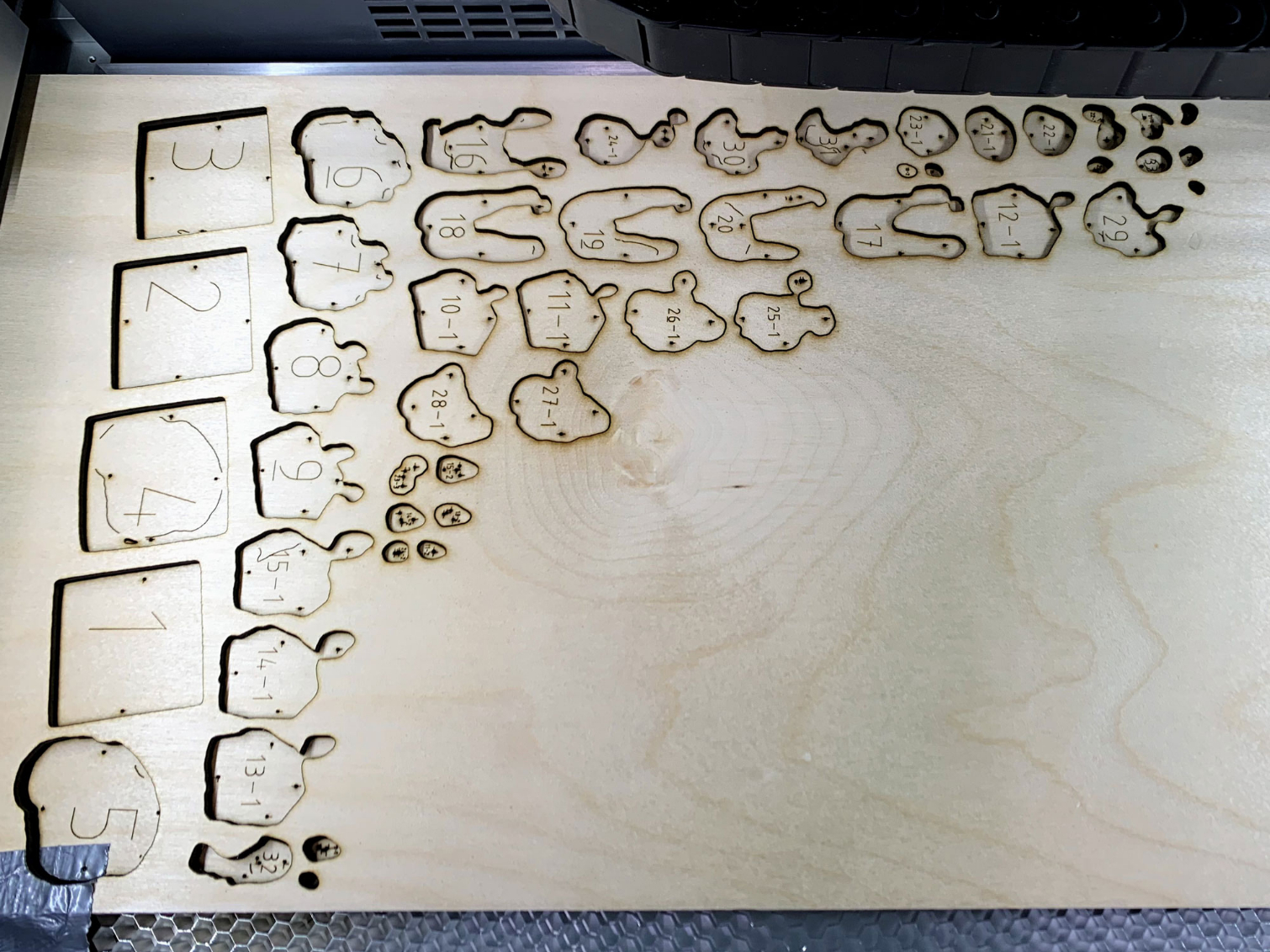
While the laser may cut without fire, there is still smoke. Even with the fan engaged and the machine connected to an outside air vent, we found that the smell of cutting still escaped, causing a slight smoky aroma from wood and an unpleasant burnt-plastic odor from acrylic. The smell is definitely unpleasant and could trigger a sensitive smoke detector, so set things up in a well-ventilated area
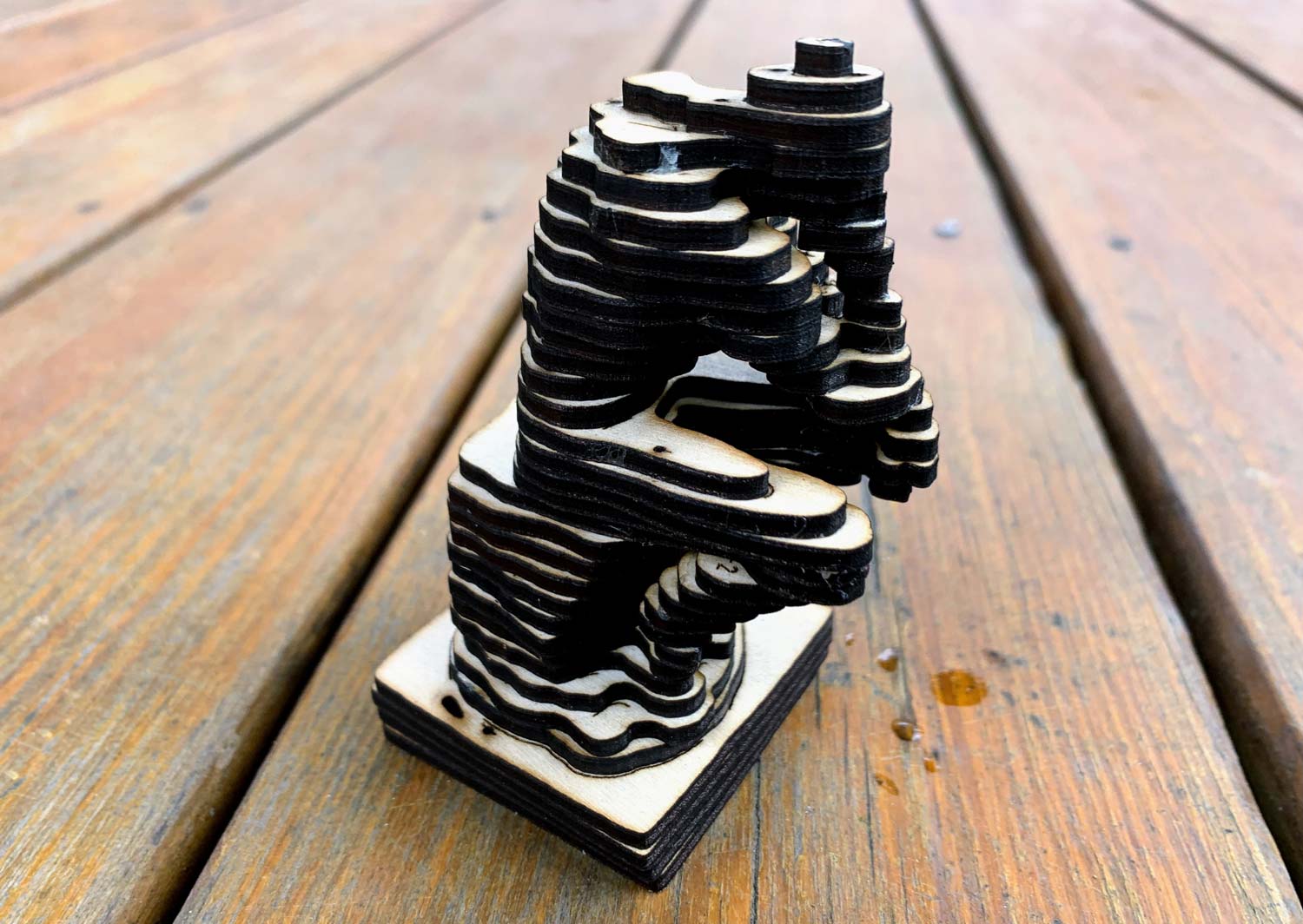
We use a 3D scan of Rodin's "The Thinker" when testing 3D printers, so I decided to use this laser cutter to create a similar model. Firstly, I loaded the model into Fusion 360, a 3D-modeling program. I then used this to cut the model into slices, each an eighth of an inch thick. Fusion 360 then arranged these into a sheet and output them as a PDF file. I loaded this onto the LC40 laser cutter, which cut the shapes out of a sheet of birch plywood that was one eighth of an inch thick. I then glued the sheets together to form the final model.
Printing Quality: Excellent, with practice
We were impressed with the quality of the cuts that the LC40 made. It cut and engraved wood and leather without problems, following the designs we input. Although the software built in to the LC40 contains presets for a variety of materials, it still takes some tweaking to get the best results. In particular, engraving materials like wood often benefits from turning the settings down and running several passes instead of doing a single, more aggressive pass.
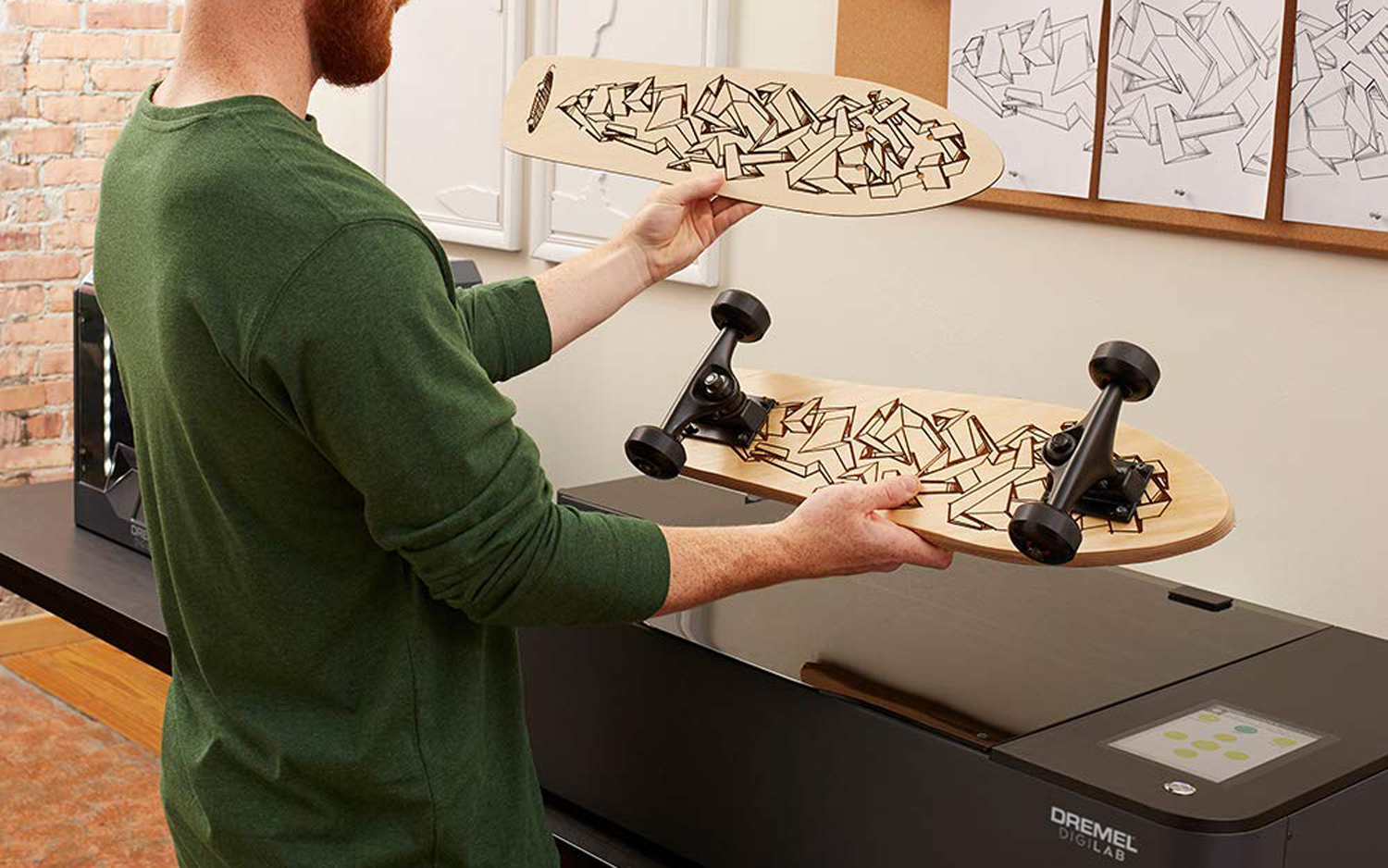
One area that did produce rather odd results involved engraving images. The LC40's software can take a photo or other image and convert it into an engraving pattern, but these usually didn't turn out that well. Instead, the process worked best with simple, graphic images and logos and worst with photos and more-complex images.
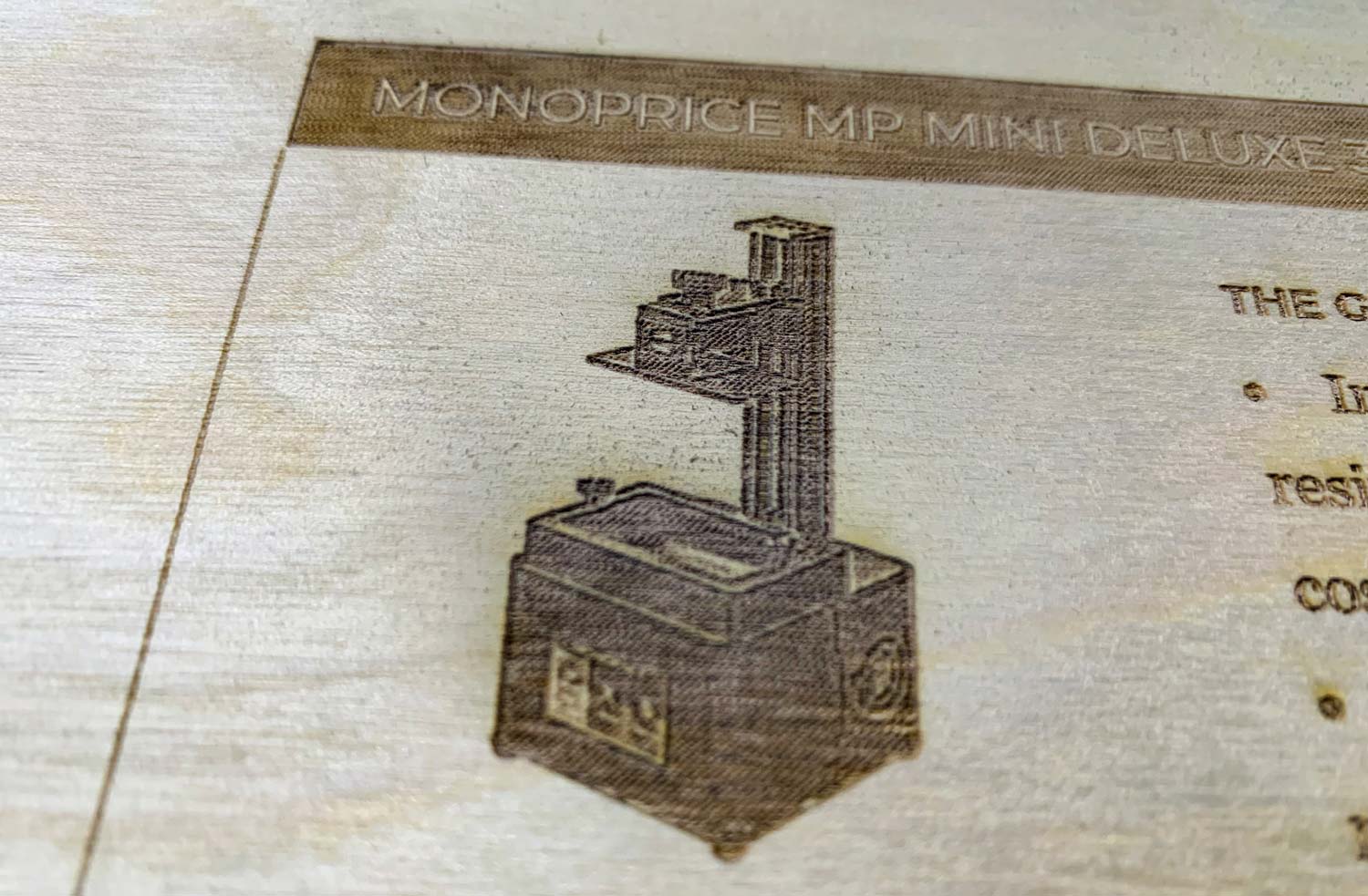
Most photos came out as dark, grungy-looking messes when they ended up burned onto wood. There are ways to make photos look better (converting to gray scale for one), but you may not get the result you expect.
Bottom Line
Laser cutters are becoming mainstream tools, and the LC40 shows why. But while Dremel's machine could bring the technique of laser cutting to home workshops, it also shows that you can't just buy a laser cutter and plug it in. While the cutter itself is admirably simple to use, it needs a dedicated ventilation system to expel the smoke and fumes produced by cutting materials. At the very least, the LC40 needs to be connected to a dryer vent in a well-ventilated area.
The LC40 is also rather expensive. It costs the same as the Glowforge Pro, the closest equivalent in the Glowforge lineup, though you can opt for less expensive Glowforge models; there are no lower-cost options at Dremel. There is also the $5,000 FSL Muse, which has a very similar list of specifications to the LC40's, but which is nearly $1,000 cheaper than the Dremel device. The FSL Muse does not have UL product safety certification, though, and the Dremel LC40 includes more safety features that might be important for educational or hackerspace users.
So, while there are cheaper laser cutters out there, the Dremel LC40 would be a good pick for a school, college, hackerspace or other shared space that needs something that's reliable and safe to use. Home users and tinkerers may prefer one of the cheaper models available, though.
Credit: Richard Baguely/Tom's Guide
Richard Baguley has been working as a technology writer and journalist since 1993. As well as contributing to Tom's Guide, he writes for Cnet, T3, Wired and many other publications.
